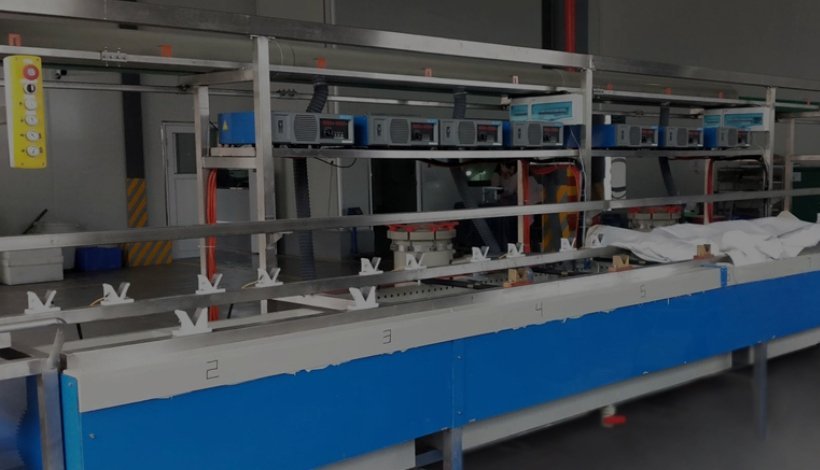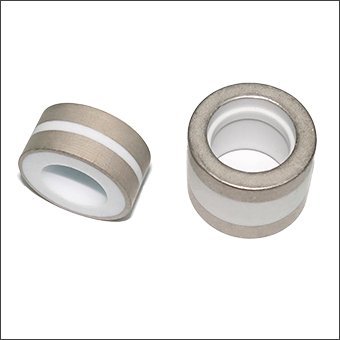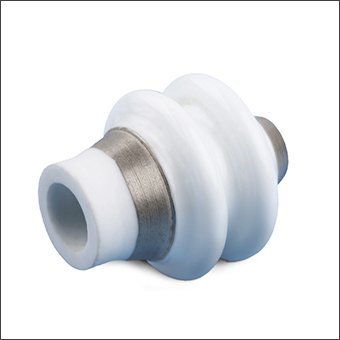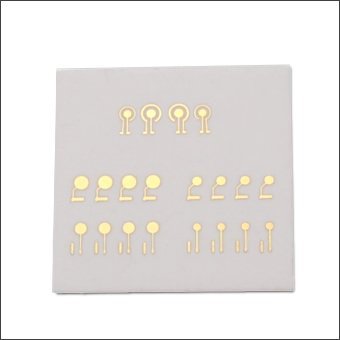Types of Ceramic Metallization
Raw materials of metallized alumina ceramics are 94.4% Al2O3 in pink, 96% Al2O3 in white, and 99% alumina in ivory. Our dimensional capability ranges from diameter φ1mm to φ200mm, max. Length to be 300mm. The jointing types are as follows:
- Ceramic base + Mo/Mn + Nickle (Ni) plating
- Ceramic base + Tungsten ( W ) + Gold (Au) plating
- Ceramic base + Silver (Ag) plating
- Ceramic base + Copper (OFHC) plating
- Ceramic base + Mo/Mn+ Nickle plating + Silver plating

Professional Metallized Alumina Ceramics Manufacturer
Jinghui manufactures a broad range of custom metallized alumina ceramics for power feedthrough, electron tubes, gas discharge tubes, and other similar electronic applications that need ceramic-to-metal joining utilizing brazing with robust and firm brazing force and ideal air-tightness requirements.
The grades of alumina for metallized ceramics mainly cover 94.4%, 96%, and 99%; all these ceramic materials are rigorously selected. Replying to our professional mold design, ceramic shaping, and post-processing ability, a diverse range of customized complicated configurations, different sizes, and dimensional accuracy levels can be made well per your specifications. The ceramic metallization is uniformly applied to designated sections of ceramic components through silk screening, spray, needle, and brush Coating. The subsequent plating and glazing process can be conducted internally.
With the full production capacity of the factory, we can complete various customized prototyping parts to support R&D needs in a short time, and can well control the cost of mass production.If you are looking for metallized alumina ceramics, please call or email us today when you discover us. We firmly believe there is an optimized solution for your specific requirements.
By Features
Jinghui supply high reliability metallized alumina ceramics components with different features .
The minimum diameter of the metalized ceramic can be 2mm, with a wall thickness of 0.5mm.
Metallized ceramic bushing is the most common shape in the application.
The maximum diameter of the metallized ceramic cylinders we can reach is 200mm.
The glazing surface is to enhance the electrical and mechanical properties.

Internal polishing for metalized ceramics is ideal for high-voltage applications.

Nickel plating can elevate the braze wettability,also protect metallization from oxidation.

Silver, a better metallic plating for brazing, can be sintered onto the ceramics directly.

We can print a simple, different pattern circuit in gold on the ceramic substrate.
An overview of metallized Ceramics
A layer of metal film is first deposited on the specific surface of advanced ceramics and then fired at high temperature in a special atmosphere (such as H2, N2, or inert gas) furnace to firmly bond the metal film to the ceramic surface. The ceramics treated by this unique process are referred to as metallized ceramics.
The process of ceramic metallization
There are 3 typical processes, they are thick-film, thin-film, and direct-bonding.
- Thick-film process: The primary method is silkscreen printing, applying Mo-Mn, W, Au, and Ag onto the designated sections of ceramic components.
- Thin-film process: It includes physical vapor deposition (PVD) and chemical vapor deposition (CVD). The metal films onto ceramic parts cover Ti/W/Au and AI.
- Direct-bonding: it includes direct bond copper (DBC) and active metal bond (AMB); these processes are mainly applied to DBC and IGBT substrates.
Our facility focuses on the thick-film process, and ceramic metallization can be applied on flat, cylindrical, convex, and various complex shapes of structural ceramic parts.
The typical thickness of metallization layers
- Mo/Mn: 10~50 microns thick
- Tungsten (W): 10~50 microns thick
- Nickel (Ni): 2 ~10 microns
- Silver (Ag): 10~20 microns ( single layer)
- Copper (OFHC): 100 ~300 microns
- Gold (Au): 0.1 ~ 3 microns
The applications
Metallized alumina ceramics have a wide range of applications in modern industries, refer to some typical uses as follows::
Vacuum electronics
- Relay insulators
- Power grid tubes
- Gas discharge tube
- Vacuum interrupter
- Traveling wave tubes
- High-power electron beam device
Medical
- X-ray tubes
- Vacuum feedthroughs,
- Electrosurgical instrumentation
- Scanners and imaging equipment
New Energy
- Nuclear energy system
- Energy storage/batteries
- Concentrated solar power (CSP)
- Hydrogen and fuel cells ( i.e SOFC)
- Power electronics and transmission (i.e, IGBT substrates),
Semiconductor
- Sensors (i.e, pressure sensor)
- Ceramic packaging (i.e, LED packaging)
- Power semiconductor device (i.e, MOSFET)
- Radiofrequency and microwave devices
- Micro-electromechanical Systems (MEMS)
- Optoelectronic & photonics device
Scientific instruments
- Gas detectors
- E-beam technology
- Particle accelerators
- Nuclear detectors
- TEM, SEM Microscopes
Technical ceramics can’t welded with metal parts directly because of their poor surface wettability and distinct thermal expansivity. After the ceramic surface is to be metalized, the specific area owns the metallic properties to realize the weld objective well.
The types not only include tubes, rings, rods, washers, but also a variety of complex structural ceramic parts.
At factory, we focus on thick-film ceramic metallization. The value of thickness of coating as below:
- Mo-Mn metallization (Molybdenum Manganese) : range from 10 to 40 microns.
- Nickle (Ni) plating: range from 2 to 10 microns.
You should consider the metalized ceramics if they fully meet your applications and performance requirements first, such as high-power, high-temperature, high-frequency, microwave, or regular electronics packaging.
Secondly, you have to choose the right base material for the metallized ceramics. The typical ceramic materials include high-purity alumina (excellent electrical insulation and most cost-efficient), high thermal conductivity aluminum nitride, high hardness silicon nitride ( high-temperature resistance and exceptional thermal-shock performance), and superb heat dissipation beryllium oxide.
Thirdly, the type of ceramic metallized is needed to evaluate, refer to the following table:
| Metallization Material | Applicable Ceramics | Advantages | Shortcomings |
| Mo-Mn (Molybdenum) | Alumina (Al2O3) | High bonding strength, mature process and big cost advantage for mass production | Not suitable for high thermal conductivity applications |
| W (Tungsten) paste | Aluminum nitride(AlN)
Silicon nitride (Si3N4) |
Idea resist high-temperature to 1800℃ and coefficient of thermal expansion ( CTE) | Metallizing temperature is high results in high manufacturing cost |
| Au (Gold) | High frequency/
microwave devices |
Good electrical conductivity, and oxidation resistance, suitable for high-precision circuits | The metallization paste and manufacturing equipment are very expensive. |
| Ag (Silver) | Low-temperature co-fired ceramics (LTCC) | Good electrical conductivity and low-temperature firing with average cost | Easy to migrate, not suitable for high-temperature environment |
Fourthly, the metallization way is a must to consider, and it primarily covers three methods:
- Thick-film silkscreen
- Thin-film deposition (PVD / CVD)
- Active metal bonding (AMB)
Our opinion is as follows: thick-film silkscreen is more suitable for large-size substrates, but not a very precise pattern with strict cost requirements. PVD/CVD is fit for high-precision circuits.
From the view of the reliability of brazed assembly, the following 2 points need to pay attention:
- The specification of the metallic coating: the type of metallization, the thickness of metallization, and electrical properties of metalized ceramics. Also, it should verify the metallic coating is not oxidized or corroded.
- The visual quality: to ensure ceramic parts free of cracks, bulges, peeling, pinholes, cleanliness, and contamination, especially ceramic metallization surfaces.
The 2 points above are easy to cause the ceramic-to-seal assemblies functional failure.







